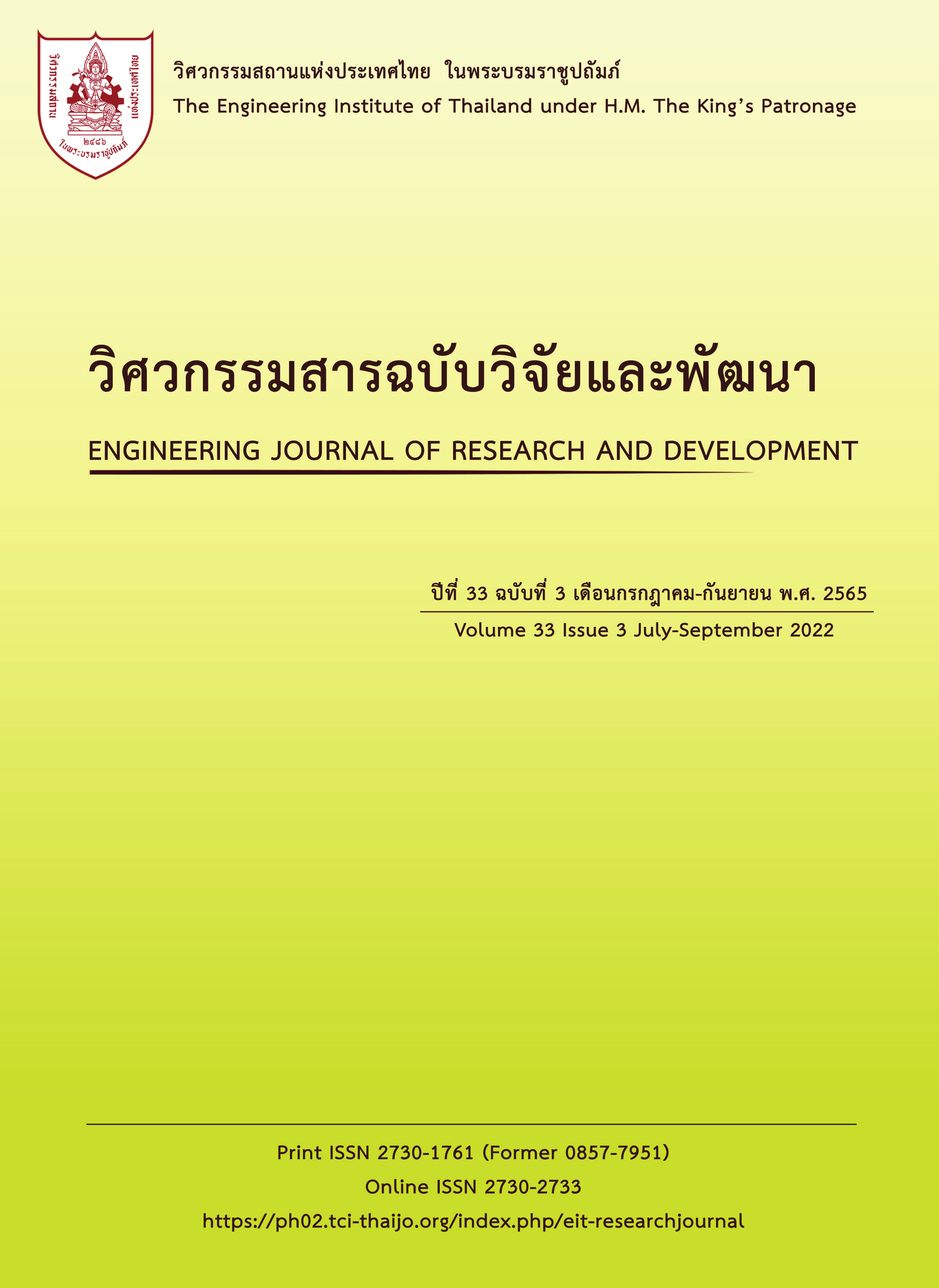SIMPLIFIED DESIGN METHODS FOR PREQUALIFIED SEISMIC MOMENT CONNECTIONS USED IN A STEEL FRAMED STRUCTURE
Main Article Content
Abstract
Extended end plate moment connections consist of a plate welded to the end of a beam that is used to splice another beam or used to bolt to the flange of a column in steel structures. These connections show different behaviors due to the influence of plate thicknesses, gauge distances, and diameters of high strength bolts. The second edition of AISC Design Guide 4 provides design procedures and examples for the evaluation of stiffness and strength of the three prequalified connections: 4E, 4ES and 8ES. The Guide recommends the use of a thick plate with small diameter bolts which leads to no prying forces. The yield line calculations of column and beam flanges can therefore subsequently be carried out. To the casual observer the selection of bolts for prequalified connections should be simple. In reality this is a difficult task. Designers must minimize time while maintaining a good selection of bolt sizes to be used with the connections. Geometrical details of the elements such as beams, columns, or end plates must be carefully selected while keeping adequate shear and moment strengths. The aim of this paper is to provide simplified design charts that offer a rapid means of selection of bolt diameter and identification of hot-rolled steel sections of the connected elements as well as selection of the geometrical features to be assigned to the connections in order to satisfy the minimum performance requirements as required by the Design Guide when subjected to wind and seismic loads. An example case study is used to demonstrate the use of the design charts.
Article Details

This work is licensed under a Creative Commons Attribution-NonCommercial-NoDerivatives 4.0 International License.
The published articles are copyright of the Engineering Journal of Research and Development, The Engineering Institute of Thailand Under H.M. The King's Patronage (EIT).
References
Sumner, E. and Murray, T. Behavior of Extended End-Plate Moment Connections Subject to Cyclic Loading. Journal of Structural Engineering, 2002, 128(4), pp. 501-508. DOI:10.1061/(ASCE)0733-9445(2002)128:4(501).
Roeder, C. Connection Performance for Seismic Design of Steel Moment Frames. Journal of Structural Engineering, 2002, 128(4), pp. 517-525. DOI:10.1061/(ASCE)0733-9445(2002)128:4(517).
Shi, G. et al. Behavior of end-plate moment connections under earthquake loading. Journal of Engineering Structures, 2007, 29, pp. 703-716.DOI: 10.1016/j.engstruct.2006.06.016.
Wald, F. et al. Component Based Finite Element Design of Seismically Qualified Joints. Journal of Physics: Conference Series, 2019, 1425, pp.012002. Available from: https://iopscience.iop.org/article/10.1088/1742-6596/1425/1/012002 [Accessed 5 June 2020].
Ding,Y. et al. Progressive collapse analysis of a steel frame subjected to confined explosion and post-explosion fire. Advances in Structural Engineering, 2016, 19 (11), pp. 1780-1796. DOI: 10.1177/1369433216649381.
Horton, T. et al. More efficient design of reduced beam sections (RBS) for maximum seismic performance. Journal of Constructional Steel Research, 2021, 183, pp.106728. DOI: 10.1016/j.jcsr.2021.106728.
American Institute of Steel construction. Design Guide 4: Extended end-plate moment connections seismic and wind applications- steel design (second edition). Chicago: AISC, 2014.
SYS. Steel Manual Thai Standard Catalog, 2020. Available from: https://www.syssteel.com/wp-content/uploads/2020/05/SYS-Catalog-Thai-Effective-March-2020.pdf [Accessed 5 June 2020].
Yamapai N. et al. Extended moment connections design charts for pre-engineered steel building. Undergraduate civil engineering Thesis, Mahidol University, 2021. Available from: https://drive.google.com/file/d/1OcQxTNwj9YuLTciRpqdKvM-FV1vG6Htw/view?usp=sharing [Accessed 5 June 2021].


